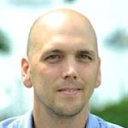The incidence of chronic headache in children with shunted hydrocephalus.
키워드
요약
Report of chronic headache amongst children with shunted hydrocephalus is frequent, and often leads to investigation for raised intra-cranial pressure and shunt malfunction, and much debate has appeared in the literature concerning possible cause. However headache is a common neurological symptom amongst children, and studies of prevalence indicate incidence of frequent non-migrainous headache to be 6.8%, and migrainous headache 4% in the general child population. A relationship between stress and anxiety and headache is recognised, and the hydrocephalic child has many reasons above those of his/her peers to be subject to stress. It is also hypothesised that this group may be more vulnerable than peers to developing a migraine-like condition in the face of adequate shunt function. The clinician dealing with complaint of chronic headache in a hydrocephalic child must therefore be wary of over-investigation in a child with a working shunt, or missing possible shunt malfunction when the only symptom is chronic headache. It was speculated therefore that incidence of non-shunt related chronic headache in this group would be high, and an attempt was made to document incidence of migrainous and non-migrainous headache in the medical notes, and in replies to postal questionnaire sent to a sample of 130 children with shunted hydrocephalus of varying aetiology. Incidence of migrainous headache was documented in the medical notes in 8.5% of cases, with incidence rising to 21.5% using self-report. Incidence of non-migrainous headache was also very high (15.4%) and the overlap between migraine and tension headache, combined with difficulty of diagnosis in children may indicate migraine to be more frequent still. The concept of "Shunt Migraine" is therefore worthy of consideration. Report of chronic headache led to investigation in a large proportion of cases, but symptomatology often continued. Even when shunt malfunction was indicated, shunt revision did not "cure" complaint of headache. Headache was not found to be related to diagnosis associated with hydrocephalus, to presence of seizure disorder, or to the sex of the child, although in common with other studies, there was a strong trend towards girls being statistically more likely to experience headache than boys. There was a relationship however between report of chronic headache, and the sort of school a child was likely to attend; children who attended mainstream school without the support of a Statement of Special Educational Need were more likely to report headache than their peers, and it is hypothesised that these children may be suffering sufficient stress to contribute to maintenance of headache. The importance of the multi-disciplinary team in assessment of children's physical, intellectual and emotional status is stressed, in order that medical interventions have the greatest chance of success.


